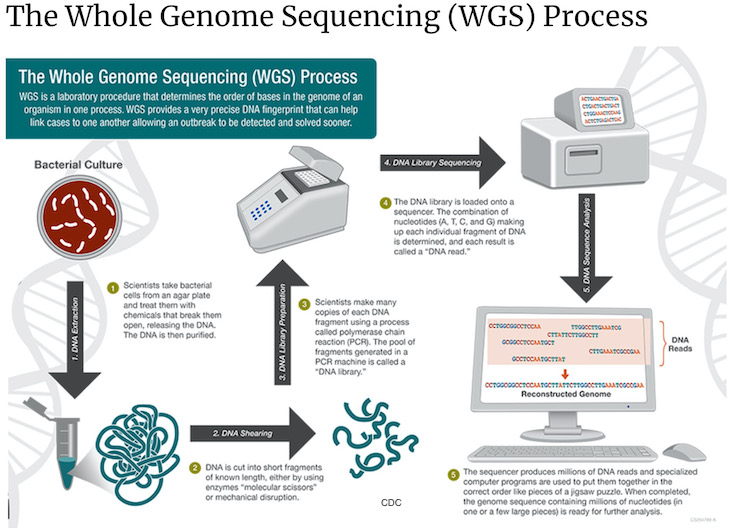The FDA has published a study on the effectiveness of the GenomeTrakr Whole Genome Sequencing Network, which is a tool the government uses to detect, investigate, and limit the spread of outbreaks that are linked to FDA-regulated foods. Despite improvements in the food safety system in this country, foodborne outbreaks are a major public health threat, sickening at least 9.4 million Americans every year, causing 56,000 hospitalizations and 1400 deaths.

Illnesses caused by foods regulated by the FDA account for about 80% of the total estimated annual foodborne illnesses in this country. The FDA thinks that the program was cost effective in its second year and is generating $100 to $450 million in net annual health benefits, compared to a $22 million investment by public health agencies. The program did help decrease foodborne illness in the U.S. in its first year, and the effect on human health shows clear improvements over time.
Whole genome sequencing is the mapping of bacteria DNA. It maps the location of four amino acids: cytosine, guanine, thymine, and adenosine. Each pathogen has a unique pattern and combination of these proteins. Whole genome sequencing is more precise and provides more high resolution source tracking than pulsed field-gel electrophoresis (PFGE), the previous gold standard for identifying pathogens.
The study suggests that for each 1,000 WGS isolate sequences that are added to the database for a specific pathogen, there is a reduction of about six illnesses per year associated with that pathogen. The pilot program tracked E. coli, Listeria monocytogenes, and Salmonella.
The analysis used data from outbreaks from 1999 through 2019 that were investigated by the FDA. Researchers examined the effect of WGS isolates collected in the U.S. on outbreak illnesses, compared results with existing literature, and conducted an analysis to estimate benefits and costs.
The study states that the benefits are mostly driven by reduction of Listeria monocytogenes illnesses in 2014. Averted Listeria illnesses accounted for 93.5% of the estimated benefits in that year. By 2019 this had fallen to 70%. The cost per illness for Listeria illnesses is much higher than other pathogens because the pathogen has such a high mortality and hospitalization rate. By 2019 the program had collected more Salmonella and E coli isolates than Listeria isolates, so information on those pathogens played an increased role in the total benefits.
GenomeTrakr network was initiated in 2012. It has grown to include federal, states, and other lab in the U.S. and other nations that use WGS for pathogen identification.




